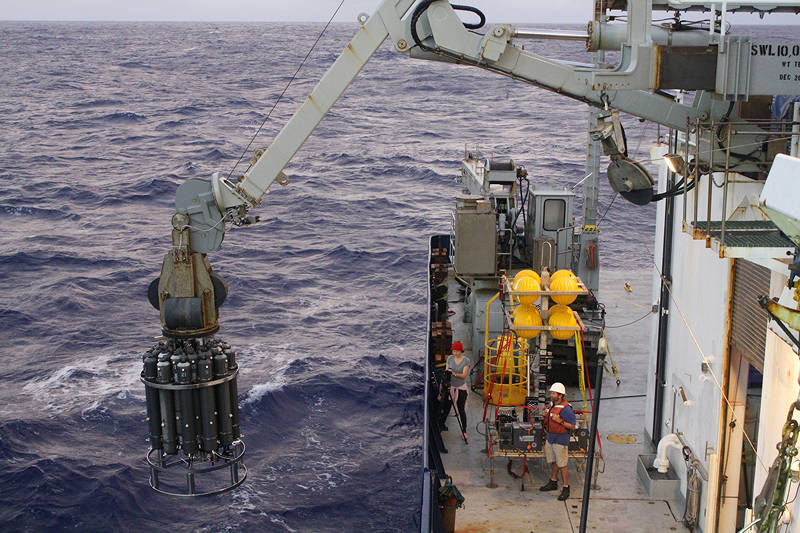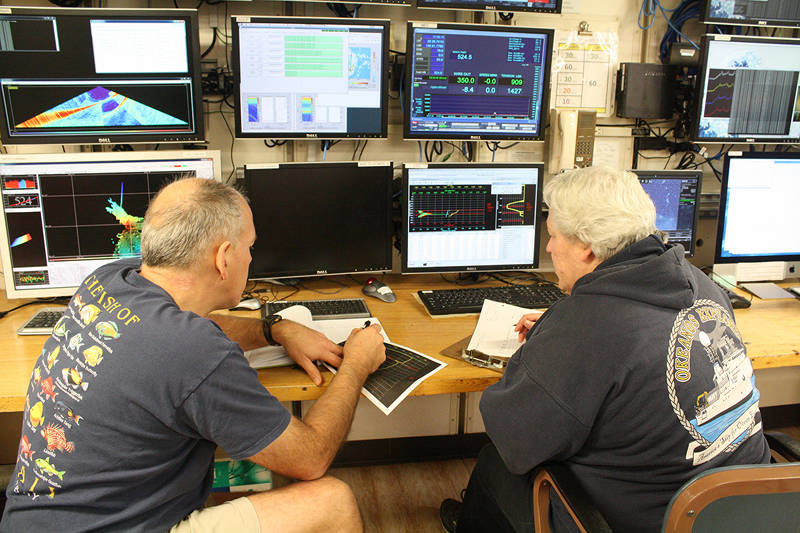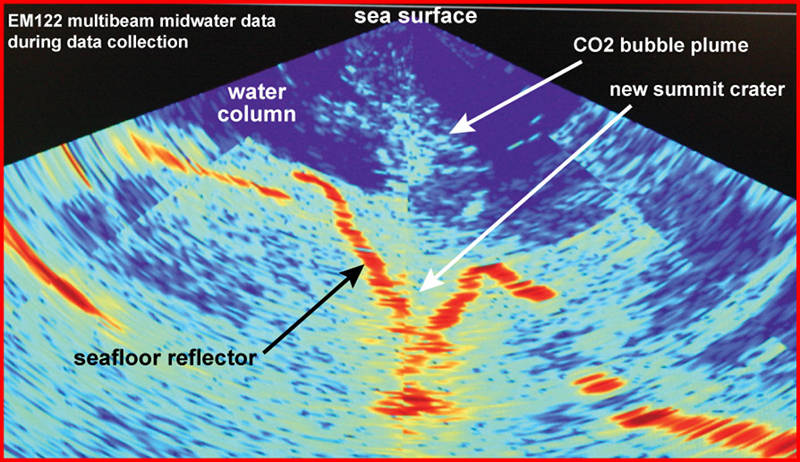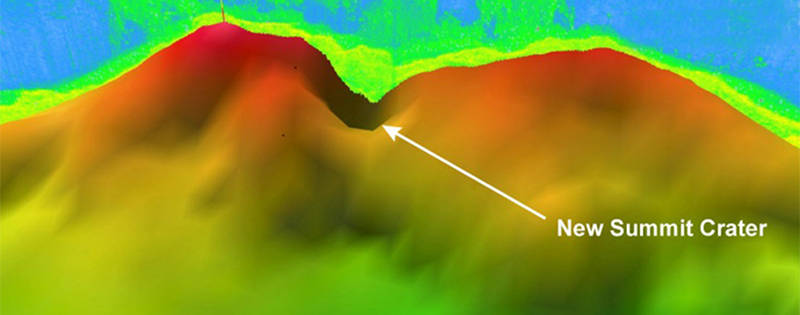
By Joe Resing - Joint Institute for the Study of the Atmosphere and the Oceans
December 04, 2014
NW Eifuku: First Dive. Video courtesy of Submarine Ring of Fire 2014 - Ironman, NSF/NOAA. Video produced by Saskia Madlener. Music by Charlie Brooks. Download (mp4, 15.7 MB)
This morning we sat off of Ahyi seamount, lowering the CTD into the ocean to assess the hydrothermal status of the volcano and waiting for daylight prior to approaching the summit.

The CTD instrument package is launched over the side of the ship to search for hydrothermal plumes at Ahyi seamount. Image courtesy of Submarine Ring of Fire 2014 - Ironman, NSF/NOAA. Download larger version (jpg, 7.5 MB).
Ahyi erupted last April-May and has been one of the more active submarine volcanoes along the Mariana arc, having erupted in 1979 and 2001. Despite being underwater, we know about Ahyi’s eruptions because they are in the shallow ocean and can be sensed at land-based seismic stations operated by the U.S. Geological Survey. Based on reports from these stations, we know that Ahyi is not currently erupting and has been quiet since the April-May eruption.
When we lowered our CTD sensor and sampling package into the water, we found a thick plume of particles that told us that Ahyi is extremely active hydrothermally and that the source of the activity is located near 150 meters depth. This is the depth of a new crater that formed during the recent eruption.

Joe Resing and Sharon Walker examine the instrumental data during a CTD tow. Image courtesy of Submarine Ring of Fire 2014 - Ironman, NSF/NOAA. Download larger version (jpg, 6.6 MB).
When we finally transited to the summit, the ship’s multibeam detected a stream of bubbles coming from that crater. We then lowered our CTD sensor package into the ocean and collected samples of the water rising from the hydrothermal sources on the seafloor. We have now documented that the April-May eruption has resulted in a robust hydrothermal system that is still putting out hydrothermal fluids seven months later.
Earlier in the cruise, we visited NW Rota-1 seamount where we had hoped to see eruptive activity, but both our CTD sensors and the ship’s multibeam sonar found no evidence for an eruption occurring. They also suggested that the hydrothermal activity had greatly declined since our last visit in 2010.

Image of the seafloor and midwater data during collection. The new crater at the summit is depicted by the red seafloor reflector. The CO2 bubble plume rising from the crater is revealed by the light blue reflectors rising above the crater. Image courtesy of Submarine Ring of Fire 2014 - Ironman, NSF/NOAA. Download larger version (jpg, 2.9 MB).

Three-dimensional image of the summit of Ahyi submarine volcano with the midwater data shown rising from the new crater created by the April 2014 eruption. Image courtesy of Submarine Ring of Fire 2014 - Ironman, NSF/NOAA. Download larger version (jpg, 2.3 MB).
How long does it take for an active volcano to cool down to the point that there was no longer robust hydrothermal activity? Why do some volcanoes remain hydrothermally active for so much longer than others?
When we visited Ahyi in 2003, we only detected the tiniest of signals. It had erupted in 2001 and two years later the volcano had mostly cooled. Now it is rejuvenated again.
Clearly, the Mariana arc is a very active place and the cycle of activity can be short. Our first survey in 2003 found nine volcanoes with robust hydrothermal activity, one erupting volcano and eight volcanoes with weak hydrothermal activity. Since that survey, there have been two new shallow submarine eruptions and two subaerial eruptions.
There are at least 60 volcanoes in the Mariana arc (most of them underwater). What other surprises and dynamic changing environments are out there waiting to be discovered?
Using a CTD to detect plumes at Ahyi. Video courtesy of Submarine Ring of Fire 2014 - Ironman, NSF/NOAA. Video produced by Saskia Madlener. Music by Charlie Brooks. Download (mp4, 23.8 MB)